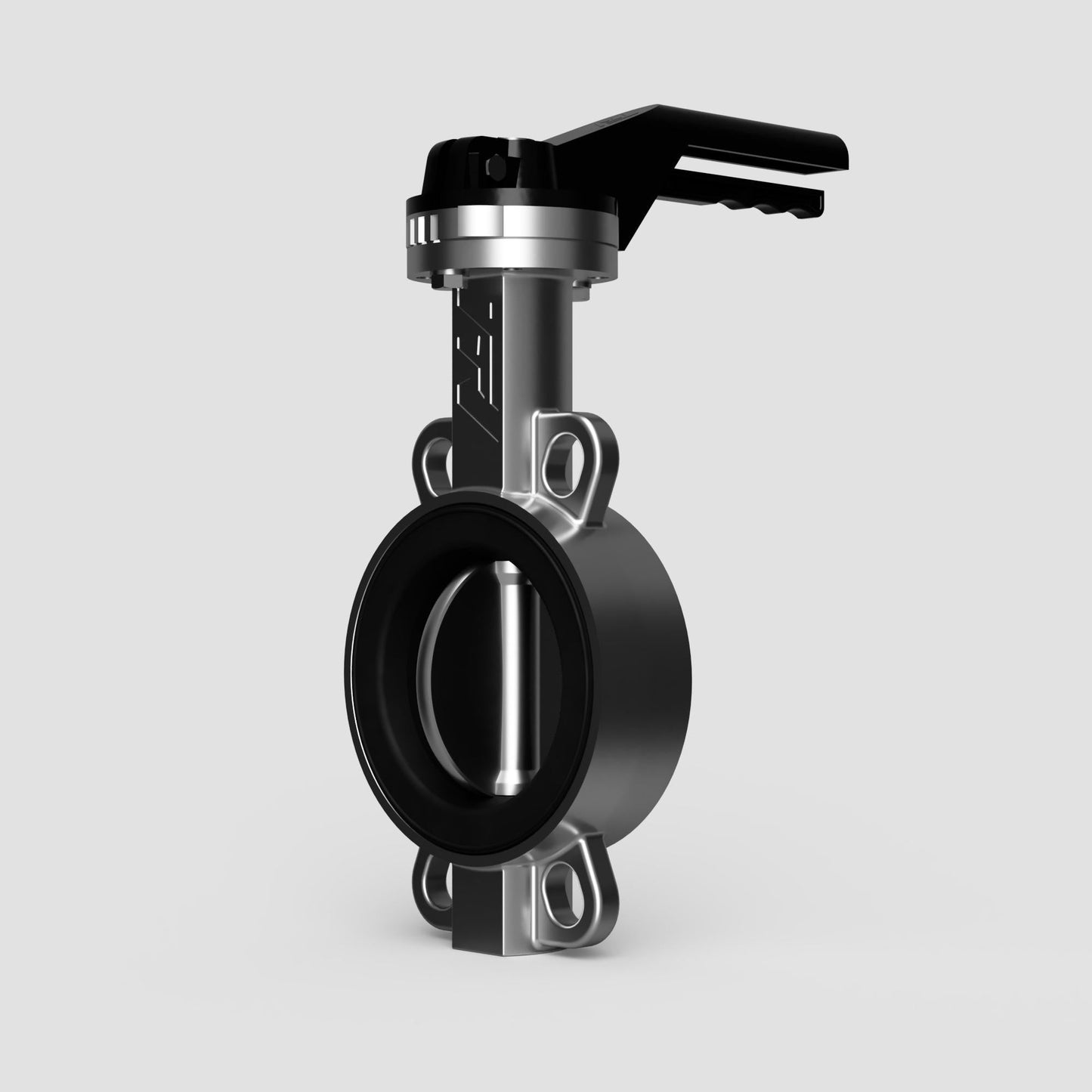Wras Valves
TTV Stainless Steel Wafer Butterfly Valves
TTV Stainless Steel Wafer Butterfly Valves
Couldn't load pickup availability
⚠️ Now Fully WRAS Approved – Valve & EPDM Seat
TTV Stainless Steel Wafer Butterfly Valves with EPDM Seat
The TTV Stainless Steel Wafer Butterfly Valves are now fully WRAS approved, including both the EPDM seat and the complete valve assembly. Engineered for dependable flow control, these valves combine robust stainless steel construction with a certified sealing solution — making them ideal for potable water systems where full compliance is a must.
Designed for ease of installation and long-lasting performance, the wafer-style body fits snugly between PN10/16 or ANSI 150 flanges. With a low torque requirement, bubble-tight shut-off, and ISO 5211 mounting pad, this valve is well-suited for a wide range of manual and automated applications in water distribution, industrial processes, and light chemical duties.
Key Features:
- WRAS Approved Valve & EPDM Seat – Certified for full use with drinking water
- Stainless Steel Body & Disc – Excellent corrosion resistance for long service life
- Wafer Pattern Design – Simple, compact installation between standard flanges
- Bubble-Tight Shut-Off – Ensures dependable sealing in all flow conditions
- ISO 5211 Mounting Pad – Supports direct actuator installation
- Low Operating Torque – Optimised for energy-efficient automation
- Replaceable Seat Design – Easy maintenance and extended valve lifespan
A smart and fully certified solution for those needing complete WRAS approval — this valve delivers outstanding performance, reliability, and peace of mind across potable water and industrial applications.
Share

FAQ's
What is the difference between a valve and an actuator?
What types of actuators are available?
The main types of actuators are:
Pneumatic actuators – use compressed air for fast, reliable operation.
Electric actuators – use electrical power for precise control.
Hydraulic actuators – use fluid pressure for high-torque applications.
Each type offers unique advantages depending on the environment, media, and system control needs.
How do I choose the right actuator for my valve?
To select the correct actuator, consider:
Valve type and torque requirement
Power source available (air, electric, or hydraulic)
Operating environment (temperature, humidity, hazardous area)
Control signal type (on/off or modulating)
Matching actuator torque and compatibility with the valve’s ISO mounting ensures reliable performance.
What are the main types of valves used in automation?
The most common valves in automated systems include:
Ball valves – for tight shutoff and quick operation.
Butterfly valves – for larger flow control with compact design.
Globe valves – for precise throttling and flow regulation.
Check valves – to prevent backflow.
Gate valves – for full bore flow isolation.
What’s the difference between a double-acting and spring-return actuator?
Double-acting actuators use air (or power) to both open and close the valve.
Spring-return actuators use air to open (or close) the valve, and a built-in spring to automatically return it to a safe position when power or air is lost — ideal for fail-safe operation.
How often should valves and actuators be serviced?
Regular maintenance intervals depend on operating conditions, but a good rule of thumb is to inspect every 6–12 months.
This includes checking for leaks, lubrication, seal wear, and actuator responsiveness to prevent unexpected downtime.

